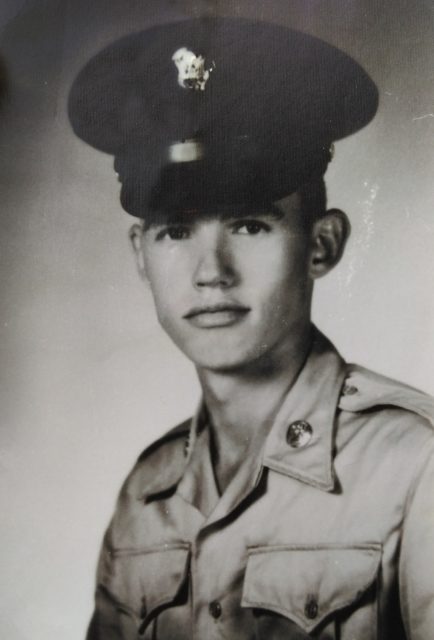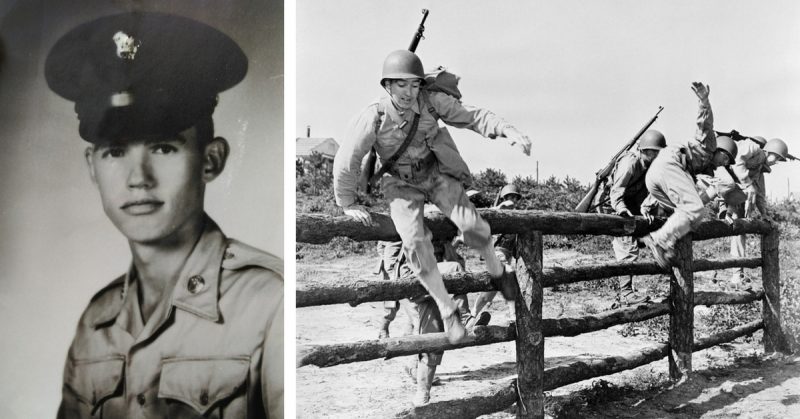War History online proudly presents this Guest Piece from Jeremy P. Ämick, who is a military historian and writes on behalf of the Silver Star Families of America.
When Army veteran Leon Hoelscher of Wardsville, Mo., passed away in 1985, his widow had little time to grieve, as the 35-year-old mother of three children was thrust into a difficult and unexpected situation. It was a time, she explained, when she had to rely upon a local funeral director to take care of the arrangements because of the overwhelming nature of her circumstances.
“It all happened so suddenly and I just didn’t know what to do at the time,” said the late veteran’s wife, Elizabeth Hoelscher-Siebeneck of Jefferson City, Mo.
As the years passed and she and her family continued to struggle with their loss, Hoelscher-Siebeneck made application for a military marker for her late husband’s grave but was denied due to a confounding date established in federal law.
Drafted into the U.S. Army in August 1966 only weeks after graduating from Jefferson City High School, Hoelscher-Siebeneck stated that her late husband went on to attend his basic training at Ft. Leonard Wood, Mo. From there, military orders dated October 4, 1966 indicate, he was transferred to the 339th Engineer Battalion at Ft. Lewis, Wash.
Records dated March 24, 1967 reveal that Hoelscher and four of his fellow soldiers received a temporary transfer for approximately 150 days to Thule Air Base in Greenland in support of “Scientific Arctic Research Projects …”
According to the Woods Hole Oceanographic Institution, Thule Air Base “was constructed in total secrecy by the US military under the code name ‘Blue Jay’ in 1951.” Additionally, the institution noted, the base was “used as the staging point for scientific ventures, most notably, the construction of Camp Century, an entire city for 85-200 residents carved 200 feet into the ice, 150 miles from Thule.”
In later years, Hoelscher-Siebeneck said, her late husband explained to her that it was at this secretive Cold War site that he and other soldiers were administered various types of drugs by military researchers to test how the substances affected them in the higher altitudes.
“He really never said much more about it to me,” she said. “I do remember him saying that they fed them really well and that sometimes he got sick because of the drugs, but most of the time he was ok.”

Returning to Ft. Lewis in late 1967, Hoelscher was then granted a brief period of leave to return home to Wardsville, where he took the first step toward building a family.
“We had met while we were both in high school,” Hoelscher-Siebeneck recalled. “When he came home in December 1967, we got married at St. Stanislaus Church in Wardsville. After that, I moved to Ft. Lewis to be with him and stayed there until he was discharged in August of 1968.”
Following his discharge, Hoelscher worked as a plumber in the Mid-Missouri area and went on to become the father to three children. However, after his sudden death in 1985, his wife was left to deal with the challenges of acquiring a marker that would denote and honor his service to the nation.
“It was a difficult period for all of us and we were absolutely in shock,” she said. “He was buried in the cemetery at St. Stanislaus and I got him a tombstone and put it on his grave because that’s what should be done.”
In the years following Hoelscher’s death, Hoelscher-Siebeneck made application to the Department of Veterans Affairs for a military marker for her late husband’s grave. She soon discovered, however, that her husband was ineligible for a marker because of a date cited in federal statutes.
“The Department of Veterans Affairs (VA) may furnish a Government headstone or marker for eligible individuals buried in private cemeteries who died prior to November 1, 1990, only if the grave is unmarked,” wrote the VA in a letter to Hoelscher-Siebeneck in 2013. “Because the veteran died before November 1, 1990, and the grave is already marked, by law we are not allowed to furnish a Government Headstone or marker.”
The VA added, “For this reason, we are denying your request for this benefit.”
According to the Department of Veterans Affairs website, for veterans who died “on or after November 1, 1990 and whose grave is marked with a privately purchased headstone,” a government-furnished headstone or marker may be provided.
“I couldn’t believe it,” said Hoelscher-Siebeneck. “When my husband passed away, there was no one there to tell us that he would or would not be eligible for such a benefit because he already had a tombstone.”
A fact sheet accessed through the VA website explains that with Public Law 110-157, which was passed December 27, 2001, Congress moved back the cutoff date from September 11, 2001 to November 1, 1990 for eligibility for a government provided marker for veterans graves already marked with a private headstone.
In an effort to get answers as to why Hoelscher was precluded from receiving a marker due to arbitrary dates, Hoelscher-Siebeneck contacted her congressional representatives. Instead of receiving an answer about the dates, she received copies of her husband’s military records, documentation reciting the federal law and, in the case of one congressional representative, no response at all.
Members of a local veteran’s organization have offered to raise the money to cover the cost of a marker for her late husband’s grave. Hoelscher-Siebeneck explained that she believes it is the responsibility of Congress to change the laws to ensure that all veterans are recognized with a marker upon their passing, regardless of their date of death and if requested by the family.
“I can believe that there are a lot of families who have gone through this and got denied, and probably just gave up,” she said. “When I walk through cemeteries and see military memorial markers in front of tombstones, I realize this is an honor that my late husband was denied because he died five years too soon.”
She somberly added, “He was very proud of his service and it really means a lot to me and my kids. I just don’t see how the government can say that one veteran is worth the expense of a marker but another one isn’t.”
